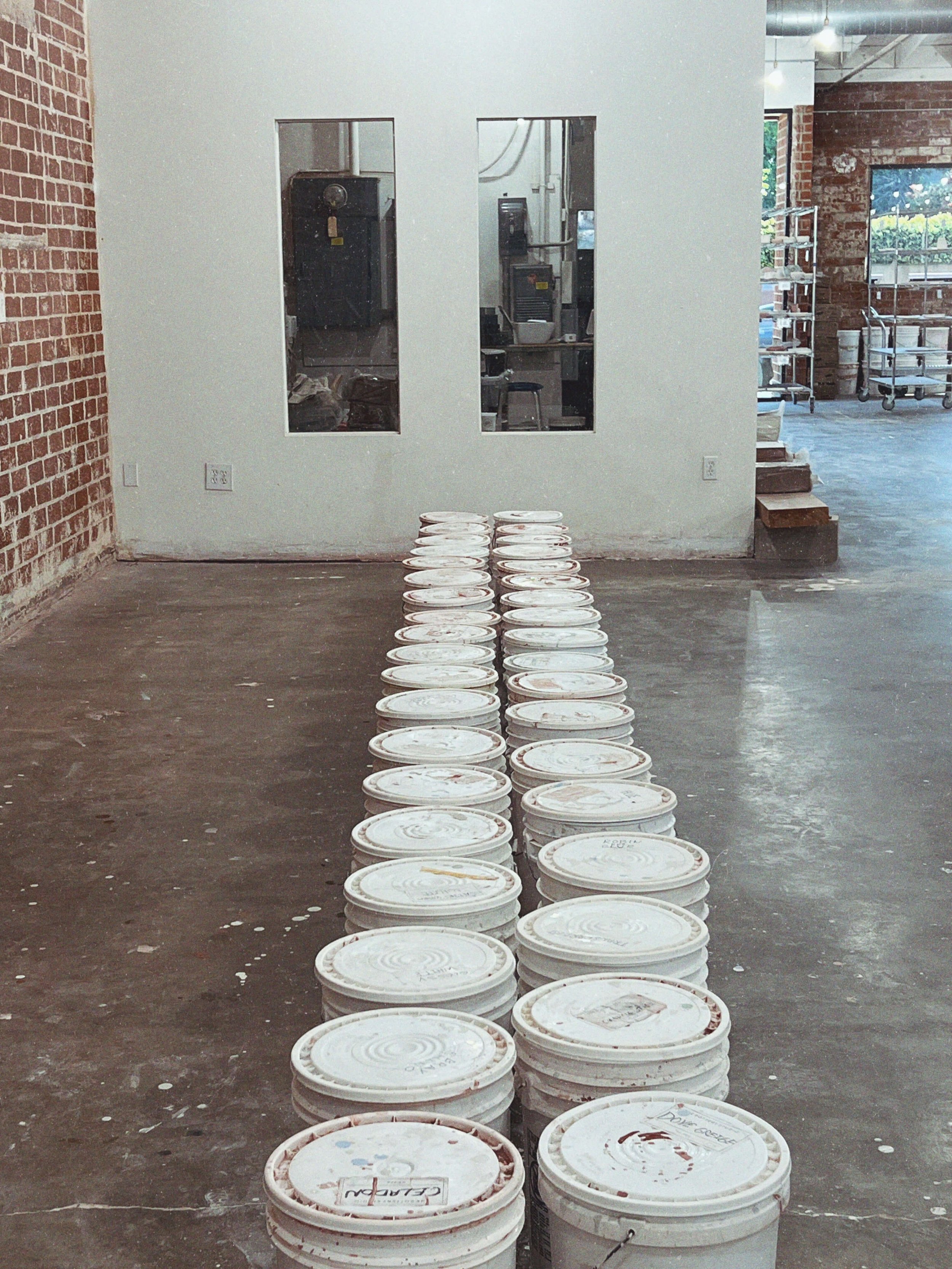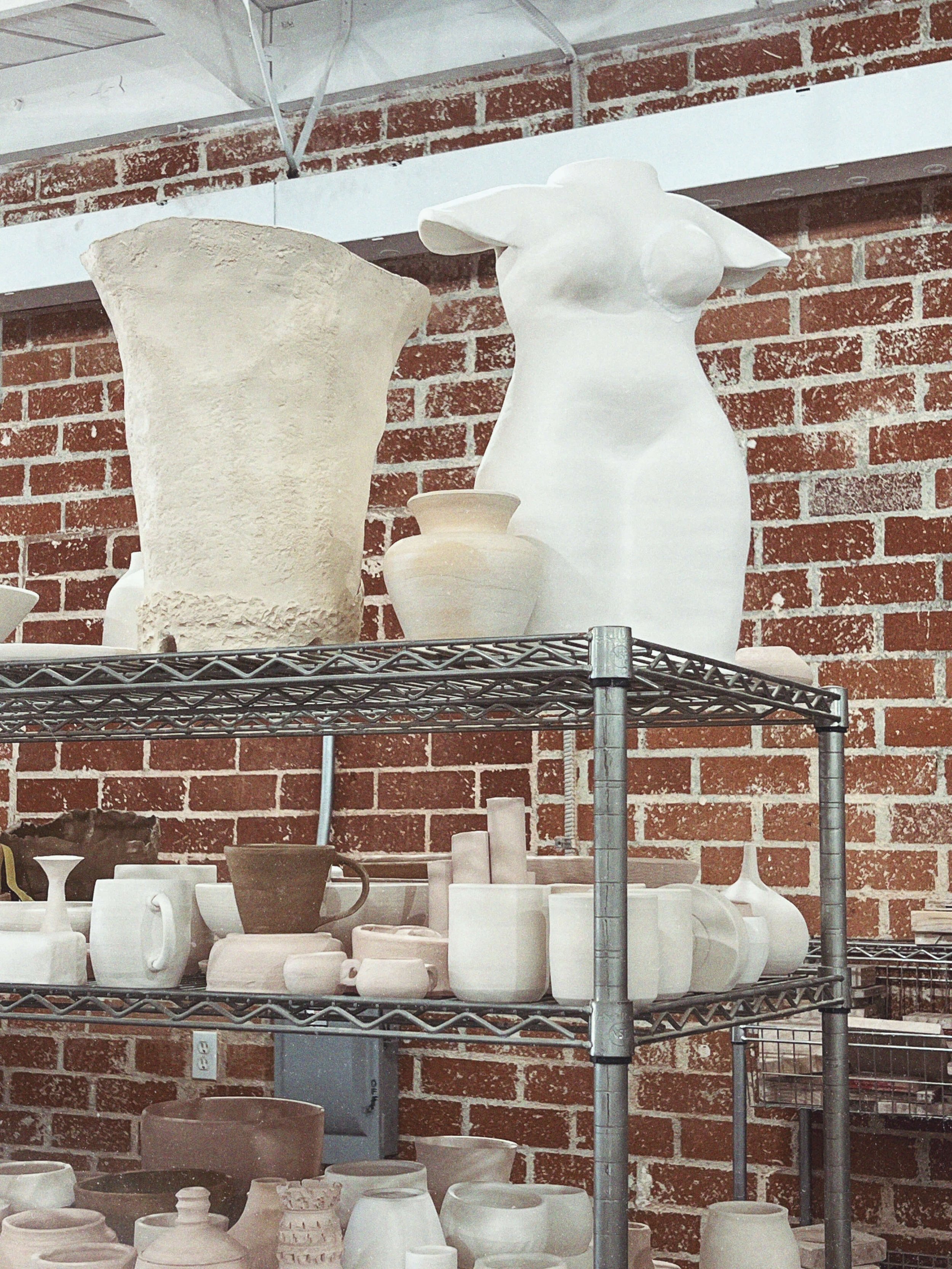Insight into the practice of creating ceramic artwork
I stumbled upon ceramics quite unexpectedly at the age of 41, a surprising twist in my otherwise art-free life. Never before had I ventured into any artistic hobby, nor had I practiced art in its traditional forms.
What I have always had is a need for aesthetics in my everyday life.
I can't always find myself surrounded by beauty, but now I can create it every day myself in my studio..
Ceramics for me is not just a way of making a living, it’s a way of making a life and communicating with the world. I invite you to experience my world of creating ceramic artwork as I walk you through my practice and processes.
the practice
There are two ways to work with clay: one is using the pottery wheel, and the second is using only your hands to build and form the shape of a piece, which is called hand-building.
I started in pottery by learning to throw clay on the wheel but soon discovered hand-building and fell in love with it. I found it more appealing to create organic shapes rather than more symmetrical ones.
Hand-building allows for a more tactile connection to the material, which I prefer. I like to mold the clay with my fingers, to feel its grittiness, cold temperature, and plasticity. It's a slower process than wheel-throwing and more meditative, in my opinion.
Many times when I start making a shape, I have a general idea of what I'm making, and it keeps changing during the process as I add a new layer of clay. Even my popular pieces, like the Sculptural Mushroom Vase, which I make over and over again, always come out differently. That's exactly what I like so much about hand-building: the newness, the wonder, and the unique character of every single ceramic artwork.
By now, my vases have been sold throughout the world. Being a ceramic artist, I find the highest satisfaction in the idea that people from different cultures can be touched by my creations.
the process
Handcrafted ceramics is a slow and deliberate craft where everything is a matter of time. Each piece requires several weeks to be carried out and undergoes multiple stages of altering and caring.
As intense as it is, it's also an intriguing and exciting process of turning dirt into the ceramic artwork you see in galleries and on social media. I'm here to walk you through each stage of making handmade pottery.
In my practice I start by making pieces in my home studio. My outdoor space under the tree is where I slowly and meticulously create every single piece you see here.
Making hand-built pottery requires several hours, sometimes days. Clay has to dry to a certain degree where it's still workable but can hold its shape to add more clay without collapsing.
When the piece is done, it has to dry slowly by being covered in plastic. Drying too fast can cause cracks..
Once a piece reaches the appropriate hardness, where I can place it in the container and move safely, it makes its way to a community studio.
In the studio, it has to dry completely, then be placed in the kiln and fired.
Pottery requires two firings: the first to strengthen it and get it ready for glaze and surface decoration application. The second is to make it durable, food-safe, and ready for use. This involves exposing the pieces to high temperatures of approximately 2381°F or 1305°C.
There are quite a few stages in making pottery where things can go wrong. Pieces can crack due to a several reasons, including drying unevenly or too fast. They sometimes explode in the kiln, luckily for me I have never experienced that.
Then, going into the second firing, there are multiple things that ceramicists need to watch out for. Glazes, in particular, are very tricky and require a lot of experience to apply.
You will be surprised but the same glaze will look completely different on different clay bodies. It can range from light blue on porcelain to dark brown on black clay. You can see the example in the photo on the right. “Chun“ glaze differs pretty dramatically in color on different clay.
You have no idea how many such surprises I got in 4 years of making handcrafted ceramics. Sometimes those surprises are good; sometimes, it's a disaster, but it's always a learning experience.
Glazes also tend to run if applied too thick, which will result in the pieces being glued to the kiln shelf without any chance to get it out without breaking.
I do use glazes sometimes, my favorites are muted colors with a matte finish.
On the photo you can see the buckets with glazes in our community studio. Lot’s of different colors and possibilities to choose from.
Textured glazes can be interesting and I use them from time to time. Depending on the pieces, I leave some unglazed because the clay itself has a beautiful tone and texture.
One of my latest experiments was with dark clay. I wanted to make my bestselling Mushroom Vase in black clay. It was my first time using it.
The vases turned out great, survived the first firing but got deformed and cracked badly in the final firing. Something I never saw or experienced before. It turned out this particular clay didn’t have enough grog, a component needed for clay stability. Now I know to be careful choosing the right clay for the right type of work I’m making.
Despite all of those obstacles, pottery continues to be my biggest passion. Watching a lump of clay turn into elegant vases or sculptural vessels is like a little magic every time!
Entering the 4th year of working as a ceramic artist, I feel that there is still so much to learn and try as pottery is so versatile, with so many techniques and approaches. My list of ideas and test I want to make only grows over time.
Thank you for being a part of my creative journey! Let the clay speak, and I hope its language of grace and authenticity will resonate with you as it has with me through my artwork.
To see my ceramics, please follow this link to my shop.
To learn more about the process of hand-building in ceramics, read my blog post - “The Artistry of Hand Building“.







